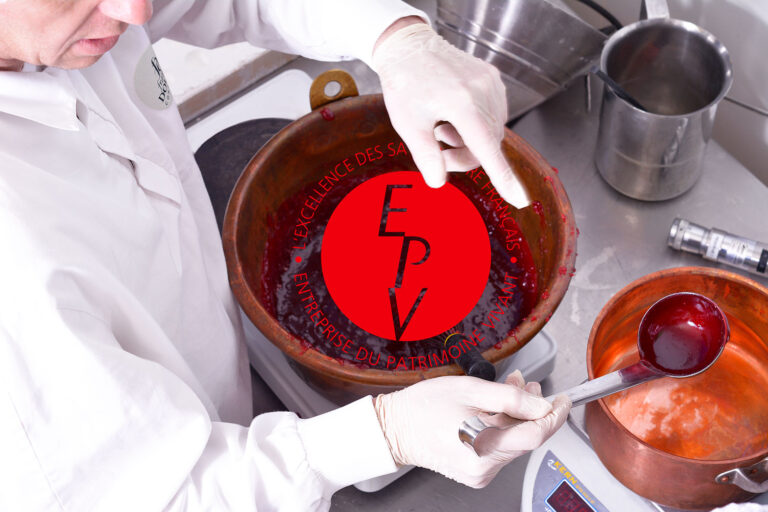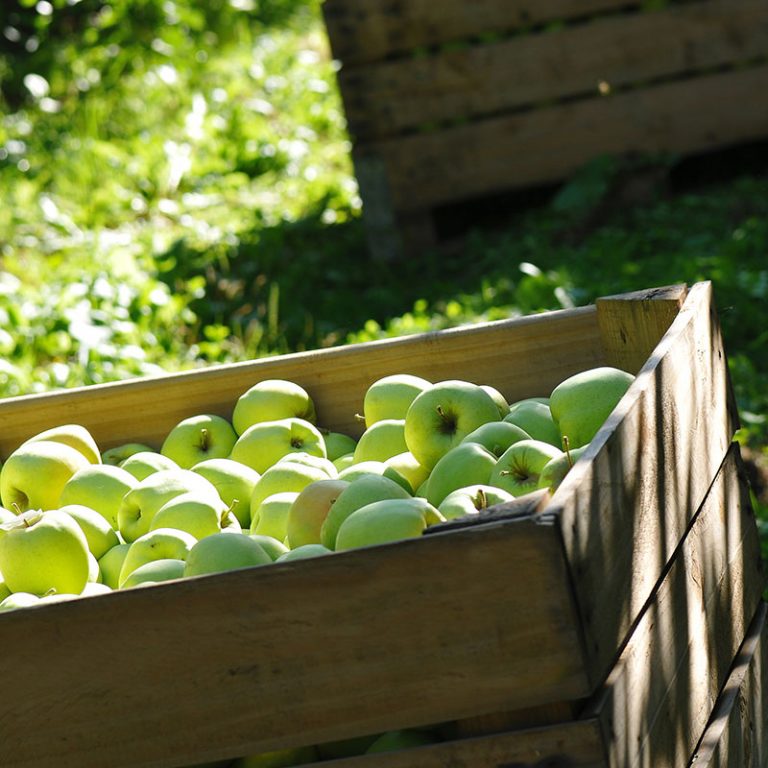France is slowly exiting a lockdown period that was conducted with more strictness than in some neighbouring countries, but which also hit us harder in economic terms. Companies are now turning their attention to the possible types of recovery: V-shaped (fast), U-shaped (slow), W-shaped (potential double dip) or L-shaped (uncertain upturn). The food-away-from-home sector is suffering as a result of reduced business levels caused by the persistence of home-working, a reduction in business travel, physical distancing measures that limit the capacity of catering venues and increase costs, and perhaps even a lack of desire among customers. One thing is starting to become clear: the world after will never be quite the same as it was before.
At François Doucet Confiseur, we have of course also been hit hard by this pandemic and its consequences: factory closures, temporary lay-offs and a cautious return to activity. We made the most of this period to think about what tomorrow could be, as well as the conditions for our resilience and that of our clients. Over the course of these weeks, we have built up a reservoir of ideas and thoughts, many of which concern the food-away-from-home sector. It is these ideas and opinions that we want to share with you today. To make for easier reading, we propose sending you, a dozen days apart, two communications (this one included). And we will of course be delighted if you want to interact with us. Write to us at mondededemain@francois-doucet.com and we will happy to get back to you.
THE REAL DIFFICULTIES LIE AHEAD OF US
For a manager, the closure of a food-away-from-home business, followed by a partial reopening or one at reduced capacity, as well as the resulting revenue losses, can call into question the sustainability of the business model, as expenses related to renting premises, equipment amortization and staff are essentially fixed costs. Government assistance has been welcome, but it can only be a temporary solution.
Les économies immédiatement envisagées (réduction de l’offre) vont à l’encontre de la qualité du service proposé, à un moment où celui-ci revêt une importance cruciale.
Et en fait la question fondamentale est pour nous ailleurs : c’est celle des changements d’habitude dans l’organisation du travail, la consommation, les déplacements, etc. Ces changements d’habitudes sont bien sûr fortement évoqués en pleine période de crise, et peut-être les effets vont-ils s’atténuer au fur et à mesure d’un retour « à la normale ». Certains peuvent néanmoins avoir des conséquences durables sur la fréquentation de la RHF, comme le télétravail, ou les visioconférences qui ne seront plus accompagnées comme les réunions physiques d’instants de partage autour d’un repas au club ; d’autres peuvent être plus positifs à condition de savoir s’y préparer, comme le retour à une alimentation plus saine, plus locale, à une offre élargie, plus surprenante, etc.
Et autant nous avons tous été touchés de manière comparable, autant l’éventail des réponses que nous saurons apporter, et l’agilité que nous saurons avoir pour les mettre en œuvre pourront faire la différence. Nous pensons ici que la pérennité de nombreux sites de RHF dépendra de cette innovation, de cette créativité et de cette agilité.
LESSONS FROM LOCKDOWN: FEEDBACK FROM OUR CLIENTS
Most of our clients believe that the crucial factors underpinning the food-away-from-home sector remain sound in France:
- France has one of the highest rates of employability, for both men and women, among developed economies. This concerns a very high proportion of the population, which has positive side effects on the numbers of children eating in school canteens and the level of lunches eaten outside the home.
- The concentration of jobs in big cities, including Paris, means that commuting times are long and it is impossible for most people to return home for lunch.
- Food is an essential human need and humans are a social animal. A few exceptions aside, these fundamental factors will not change. While they are diminishing, much greater value and time are given over to the lunch break in France than in Germany and the United Kingdom, for example.
Trends observed during the lockdown and recently highlighted in a study by LSA (a French magazine that analyses retail and consumption trends), which also apply to the food-away-from-home sector, were partly influenced by this exceptional situation, but they also show underlying forces that can have positive impacts on the sector:
- We must rapidly mention the close attention paid to hygiene, which is related to the virus but will have a lasting influence: impeccable cleanliness of reception spaces, communication regarding hygiene measures, and a safe and reassuring environment, which must make people want to come even more than before.
- “Home-made” production is illustrated by the boom in sales of DIY products and nutritional yeast, for example, but it will also make food produced directly by chefs, as well as authentic and local food in general, more important in the eyes of consumers in the food-away-from-home sector. Will this signal the end of ready-to-use ingredients that are vacuum-cooked, pasteurised or sterilised?
- Everyday little pleasures, in particular with a significant increase in chocolate consumption (+49%). In the context of a gradual exit from lockdown, we can imagine that shared meals with colleagues in the staff canteen, which have become a rarer sight due to home-working, will come back in a big way, benefiting those who are able to win over and retain this client base.
- The fourth trend of “resourcefulness” will likely lead to increased demand for manual and discovery activities: increasing the range of options, making it easier for people to put together their own meals at the buffet, revealing the recipe of the week around an original offering, etc.
Lastly, the great amount of feedback gathered from the field highlights success factors that are moving in three main directions: innovation, strong local roots and the ability to remain very close to the customer base at all times, in every sense of the term:
- Innovation: this has shown through in the introduction of new services, or the expansion and facilitation of services. These include catering services, the ability to prepare and preserve food baskets or meal parcels in good hygiene conditions, including for the evening, and add special touches… Catering services are often complemented by a click & collect service, which of course means that you need to have an up-to-date website (with a daily online menu) that is easy to access. In all cases, innovation also means creating imaginative menus and products, which offer customers a pleasant surprise.
- Strong local roots: this shows itself in various ways and is linked to the renewed demand for local shops, such as delicatessens, butchers, bakers and other retailers during the period. It is based on feelings of trust, familiarity, proximity, and daily interactions with the chef and staff, as well as environmental responsibility, the carbon footprint, and so on. We should also not forget the aspect of convenience. We can consider buying from local or regional producers (and publicising this fact of course).
- The ability to remain very close to the customer base, in every sense of the term. This of course involves service with a smile and a stable team, a broader digital offering, possibly with a pre-ordering and booking system, regular newsletters, communication on social networks, responding to email requests, and the list goes on. In certain cases, expanding the offering to cover businesses in the local community can be an opportunity to widen the catchment area and guarantee a break-even point. Lastly, solidarity with your ecosystem will also be viewed positively. We have seen examples of several manufacturers that have made donations, as François Doucet Confiseur did when it gave several hundred kilograms of fruit jellies to hospitals that were overloaded with Covid-19 cases. In short, the idea here is to enhance the customer experience and to expand your action well beyond simply welcoming customers in the restaurant or canteen.
PLANNING A POST-PANDEMIC RECOVERY SCENARIO
While not all of these trends are new, it is likely that the COVID-19 pandemic will be a catalyst for them. We prefer to see them in a positive light, because they represent significant leverage that will enable us to stand out and capture the attention of a customer base that is looking for new points of reference.
In our next communication, we propose taking a closer look at these trends and showing how we, at François Doucet Confiseur, have taken them on board and prepared as well as possible for both our exit from the pandemic and that of our clients. This will be our own feedback that we would like to share with you.




